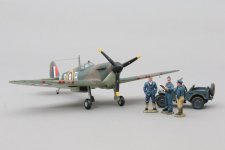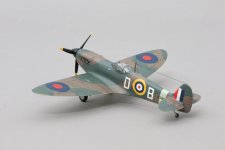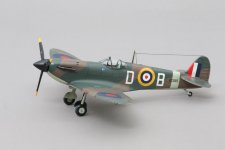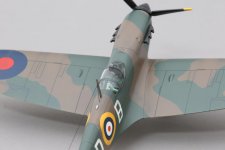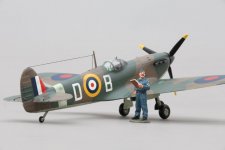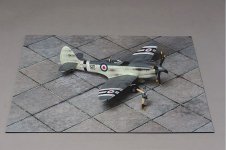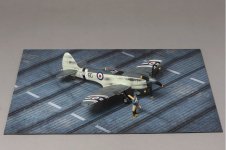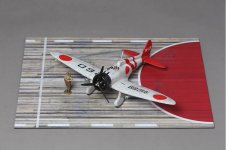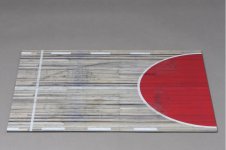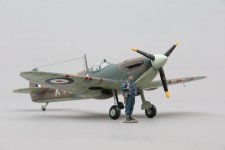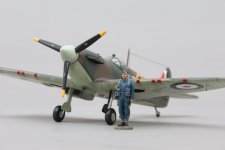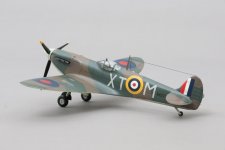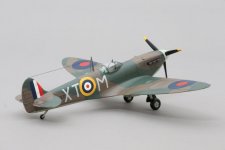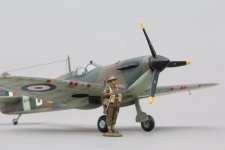The Supermarine Spitfire was a British single-seat fighter aircraft used by the Royal Air Force and other Allied countries before, during and after World War II. Many variants of the Spitfire were built, using several wing configurations, it was produced in greater numbers than any other British aircraft. It was also the only British fighter produced continuously throughout the war.
The Spitfire was designed as a short-range, high-performance interceptor aircraft by R. J. Mitchell, chief designer at Supermarine Aviation Works, which operated as a subsidiary of Vickers-Armstrong from 1928. Mitchell pushed the Spitfire's distinctive elliptical wing designed by Beverley Shenstone to have the thinnest possible cross-section, giving the aircraft a higher top speed than several contemporary fighters, including the Hawker Hurricane. Mitchell continued to refine the design until his death in 1937, whereupon his colleague Joseph Smith took over as chief designer, overseeing the Spitfire's development through its multitude of variants.
During the Battle of Britain, from July to October 1940, the public perceived the Spitfire to be the main RAF fighter, though the more numerous Hurricane shouldered a greater proportion of the burden against Nazi Germany's air force, the Luftwaffe. However Spitfire units had a lower attrition rate and a higher victory-to-loss ratio than those flying Hurricanes because of the fighter's higher performance. During the Battle, Spitfires were generally tasked with engaging Luftwaffe fighters-mainly Messerschmitt Bf 109E series aircraft-which were a close match for them, whereas the Hurricanes were used to engage the slower German bombers.
This first variant of the Spitfire WOW196 was one flown by Sir Douglas Bader an ace credited with 22 aerial victories, four shared, six probable's and eleven enemy aircraft damaged. Bader joined the RAF in 1928 as a pilot and it was whilst carrying out aerial acrobatics he crashed and lost both his legs. The RAF discharged Bader against his will but he was able to rejoin the RAF on the outbreak of war. Bader scored his victories during the Dunkirk and Battle of Britain campaigns, only to be shot down in August 1941.Bader made several escape attempts until he was told he was going to be sent to Colditz Castle prisoner of war camp which was deemed escape proof. Bader told the Germans he expected to "travel first class and be accompanied by a batman and an officer of equal rank!" He remained there until US forces liberated the castle in April 1945.
After the war Bader left the RAF and went to work in the oil industry, he only stopped flying at the age of 69 and died of a heart attack at the grand age of 82 years old.
